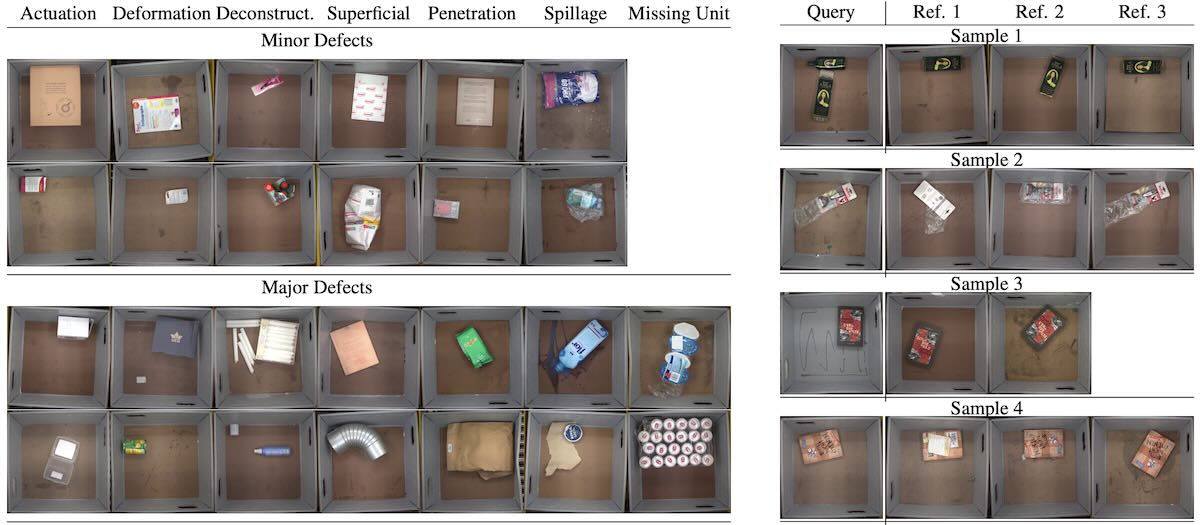Abstract
We present a novel large-scale dataset for defect detection in a logistics setting. Recent work on industrial anomaly detection has primarily focused on manufacturing scenarios with highly controlled poses and a limited number of object categories. Existing benchmarks like MVTec-AD (Bergmann et al., 2021) and VisA (Zou et al., 2022) have reached saturation, with state-of-the-art methods achieving up to 99.9% AUROC scores. In contrast to manufacturing, anomaly detection in retail logistics faces new challenges, particularly in the diversity and variability of object pose and appearance. Leading anomaly detection methods fall short when applied to this new setting. To bridge this gap, we introduce a new benchmark that overcomes the current limitations of existing datasets. With over 230,000 images (and more than 29,000 defective instances), it is 40 times larger than MVTec and contains more than 48,000 distinct objects. To validate the difficulty of the problem, we conduct an extensive evaluation of multiple state-of-the-art anomaly detection methods, demonstrating that they do not surpass 56.96% AUROC on our dataset. Further qualitative analysis confirms that existing methods struggle to leverage normal samples under heavy pose and appearance variation. With our large-scale dataset, we set a new benchmark and encourage future research towards solving this challenging problem in retail logistics anomaly detection. The dataset is available for download under https://www.kaputt-dataset.com.
Citation
Acknowledgements
We thank our collaborators in Amazon's operations, hardware and software engineering, as well as our annotation teams. Their invaluable contributions to hardware development, software implementation, data collection, and labeling efforts were essential to the success of this work.
Cookie Notice
We use cookies and similar tools (collectively, "cookies") for the purposes described below.
Operational Cookies: We use cookies to provide our services, for example:
- To ensure the functioning of the dataset request form
- To prevent fraudulent activity and automated submissions
- To improve security of our research data access system
Operational cookies cannot be disabled because without them the site would not function properly.
Operational cookies will remain on your browser for up to 13 months from your last visit to our services.
See our Privacy Notice for more information about how we handle your data.




